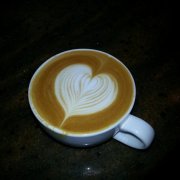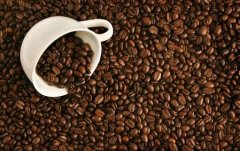Fancy coffee that is common in Australia

When I come back from Australia, when I mention coffee, I naturally think of learning the plot of coffee in Chongqing. Now I am used to putting a few bags of hanging-ear coffee in the office and making two cups during the break. I occasionally go to Beresta to sit down with my friends, not only to find a quiet place to get together, but also to have a mellow Ethiopian-Sidamo G2 or a bottle of red wine directly.
Before I came to Beresta to learn coffee-I didn't know anything about coffee at that time. I thought it was very simple. After learning, I realized that the knowledge of coffee was broad and profound, which was no less than the Chinese tea ceremony.
I only became addicted to drinking black coffee after I went to Brissta to study coffee. Of course, I also drank coffee during that time in Australia, but I didn't like it as much as I do now.
Drinking coffee in Australia: usually drink Espresso from a steam pressurized coffee machine with Froth/Foam and sprinkle it with chocolate powder to make a full-bodied Cappuccino, which was my favorite coffee at that time.
In Australia, the most common coffee is: Cappuccino; Latte; Flat White; Short Black;Long Black.
When you walk into a coffee shop, you will feel dazzled by so many coffee drinks. Which one should you choose? Do you want to know the difference between a cappuccino and a latte? What is a short or long black? (With so many styles of coffee the choice can be a bit overwhelming when you walk into a cafe. Are you looking for information on what the difference is between a cappuccino and a latte, or a short and long black?)
Next, based on what I learned at Brista Coffee training School, I will give a brief introduction to these coffees:
First of all, these different drinks are divided into two categories: with and without milk. The different drinks have been separated into two categories, milk based and non-milk drinks. White coffee with milk (white coffee) and black coffee without milk (black coffee). Coffee is flushed out through a steam-pressurized coffee machine, and milk is foamed by adding air to the steam milk bar (steam wand) on the coffee machine.
1. Cappuccino, transliterated as "cappuccino" or "cappuccino" in Chinese.
After steam heating and beating into foam, the tissue of the milk becomes dense, but it can still flow, which is the best condition for making coffee works with milk and espresso. (When steamed and frothed, the milk develops a texture that is creamy and thick, but still flowing, which is absolutely perfect for creating coffee masterpieces out of milk and espresso.)
The usual ratio of cappuccino is: 1pm 3 espresso + 1pm 3 steamed milk + 1pm 3 foam. Of course, when baristas make cappuccino coffee on request, they will also divide it into frothy cappuccino and less frothy cappuccino, commonly known as dry cappuccino (Dry cappuccino) and wet cappuccino (Wet cappuccino). A cappuccino will generally be served to the following proportions:1/3 Espresso + 1 + 3 Steamed Milk + 1 + 1 Froth.)
2. Latte, the Chinese translation of "latte", always reminds me of a blacksmith, wearing thick gloves, holding red-hot iron with iron pliers in one hand and a sledgehammer in the other.
Latte is also a kind of coffee with milk, which usually includes espresso and steamed milk, with foam about 1 centimeter thick at the top. (A latte is also a milk based drink. It is usually served with espresso,steamed milk and around 1cm of milk froth will settle on top.)
La Flower Coffee: the art of making a professional latte lies in the skill of turning the flow of milk when pouring milk into the cup, which requires a lot of practice and skilled clerks. (The artwork of preparing a Caf é Latte is created by the swirling flowing motion of the milk that is produced when it is poured,which requires agreat deal of practice and highly skilled staff.)
3. Flat White, regular white coffee
Plain white coffee is one of the most common kinds of coffee. Flat means "flat" and requires that milk be poured into the coffee just as flat as the cup. In most cases, regular white coffee includes espresso and steamed milk with little or no foam at all. A flat white will in most cases be served with espresso and steamed milk, little or no froth. The coffee grease on the top layer is intact and is traditionally filled with pottery cups. (This leads to a white coffee with the crema on top still intact. The drink was traditionally served in a ceramic cup.).
4.Espresso coffee, espresso.
This kind of coffee is a cup of strong coffee which is quickly extracted by steam pressurization and is generally suitable for men in China. Because the weight is too small and the taste is strong, many domestic friends are not used to drinking it for the time being. However, in foreign countries, such coffee is very favored by white-collar personnel.
5.Short Black, a small cup of black coffee, can be understood as very concentrated.
There will be a layer of golden coffee oil on the top of the fresh small black coffee. Only the coffee machine automatically brews the coffee, no extra water is added. This is also the most basic espresso for making other coffee drinks. A good/fresh short black will have a thick golden crema on top. There is no extra water added apart from what is used to brew the coffee. This is also the basis for almost all espresso coffees.)
6. Long Black, a large black coffee, is usually thought of as American mellow coffee.
Large black coffee usually uses tall glasses or large porcelain cups. (A long black is usually served in a taller glass or mug.) Hot water is usually heated by a coffee maker. (Usually the water is also heated by the espresso machine.)
When making large black coffee, the order of water and coffee is very important, be sure to hot water first, espresso later, reversing the order will destroy the coffee oil at the top of the espresso. The order in which a long black is made (hot water first,espresso second) is important-reversing the steps will destroy the crema from the espresso.
The above are just the basics of a few common types of coffee. How does it feel? When you enter the coffee shop again, I believe you have increased your confidence.
I practiced at Brista Coffee School for a month to learn how to make the perfect cup of coffee.
Important Notice :
前街咖啡 FrontStreet Coffee has moved to new addredd:
FrontStreet Coffee Address: 315,Donghua East Road,GuangZhou
Tel:020 38364473
- Prev

Coffee pull flower teaching work
The warm spring has arrived, but the severe cold has not gone away. Today, the outdoor temperature is less than 10 degrees Celsius, and the temperature is still very low. The students who entered the Brista Coffee West Point training College are studying hard. The cold weather did not affect the enthusiasm for learning coffee. The students absorbed all the knowledge about coffee like a sponge until it was saturated. Now sitting in the office, looking at the table.
- Next

Coffee roaster training summary barista manual
Today, we would like to sum up the classroom teaching on coffee roasting. In our coffee industry, there is a small division and three masters. This teacher refers to our baristas, that is, the people who make coffee drinks at the bar. This small teacher, as long as you are clever and diligent, you can reach a level in a year or so. And the three masters need more than
Related
- What is the meaning of lactic acid fermentation with coffee bean treatment?
- How to judge the state of foam by sound?
- How does the latte pull out the unicorn pattern? Come to get for a little trick to improve the flower pull!
- Will flower pulling affect the taste of the latte?
- Do you know the history of coffee?
- The difference between honey treatment and sun washing what is raisin honey treatment?
- What kind of milk can a novice use to make coffee foam to keep the foam longer? The correct method and skills of milking tutorial sharing
- Why do washed coffee beans taste sour? Flavor characteristics of washed Coffee
- Introduction to the skill of how to practice the size and height of water injection around the circle of hand-brewed coffee
- How do beginners practice coffee flower drawing from scratch?

